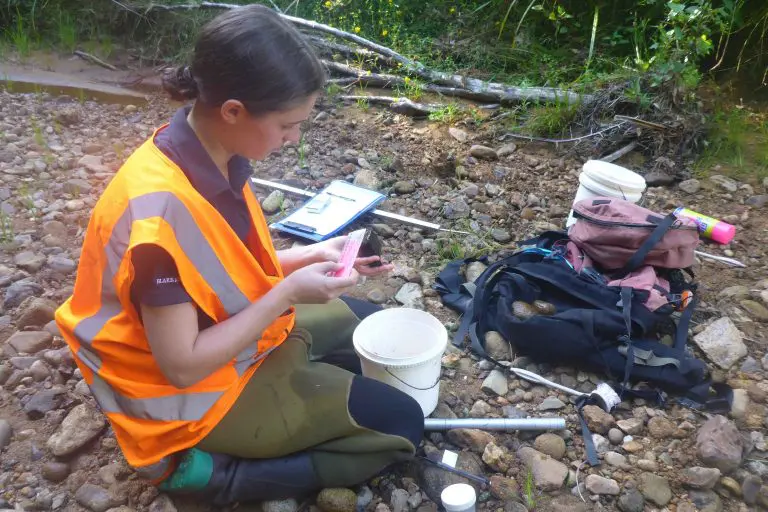I spent most of the first week of my NIWA ambassadorship in the Coromandel, monitoring stream invertebrates in forestry catchments with Brian Smith, a freshwater biologist, and Kat Reeves, a freshwater ecology technician. We monitored 13 sites in total, which were found in the forestry area between Coromandel township and Whitianga. We compared stream invertebrate health in commercially forested catchments with native forest catchments (our reference sites), to assess the impact of commercial forestry on overall stream health.
Each day we would start work at about 7.30 am, grab a coffee, and head off to our first site. Access to the sites was varied – at some sites we were able to park the truck right next to the stream, while at others we had a 10-15 minute walk to the site, which could mean wading through the stream itself, or walking through the bush to reach the stream site. At each site we did a stream characterisation, taking photos and noting general stream appearance. We also collected samples of stream invertebrates, and noted physical characteristics of the stream such as width, water depth, and substrate type. After our long days out in the field, we returned to our base in Whitianga keen for a swim in the ocean before dinner.
The smallest stream section we sampled was located down a steep bank covered in kanuka trees. This site was amazing, as although the stream was small, we came across large inanga (one of the whitebait species), koura, and even an eel, all in a small pool. There were also what seemed like hundreds of stick insects in the kanuka trees – I’ve never seen anything like it!
Amazingly, this monitoring work has been carried out for over 20 years in the Coromandel, providing an extremely rare and valuable dataset. The collected data shows both physical stream changes and stream invertebrate changes in response to planting or felling of pine forest. The data we collect is also used to monitor resource consent conditions that the forestry companies must adhere to.
Stream invertebrates are very good indicators of overall stream health in an area. Certain groups of invertebrates – namely mayflies, stoneflies, and caddisflies – are commonly used to indicate the health of a stream ecosystem. As Brian Smith, (a caddisfly world expert and the leader of this trip) explained to me, these species are sensitive to changes in their environment, and so monitoring changes in their abundance can provide information as to whether the stream health is improving, stable, or declining.
Most of the streams we monitored are down private forestry roads which are inaccessible to the general public, so it was amazing to go to these beautiful stream sites which very few people are lucky enough to experience.

Charlotte Tomlinson
BLAKE NIWA Ambassador 2017


